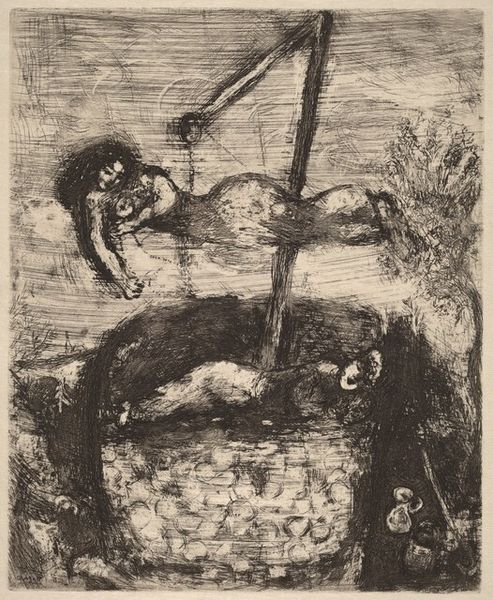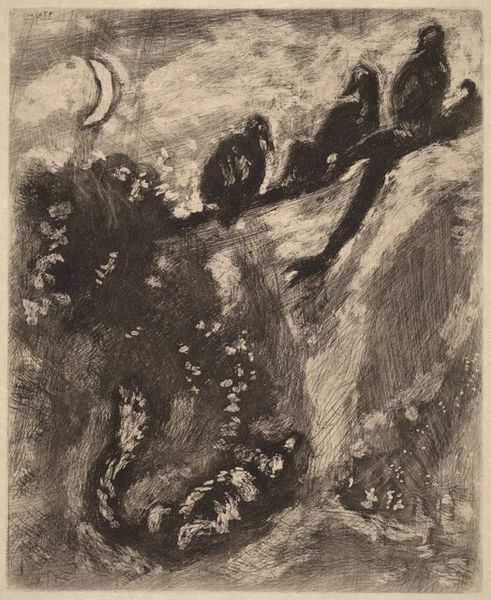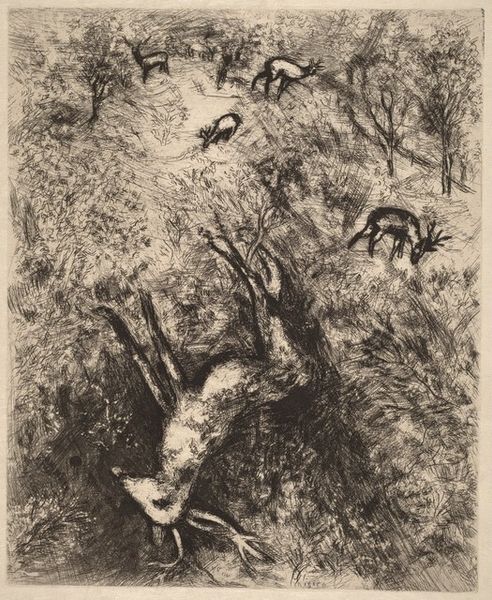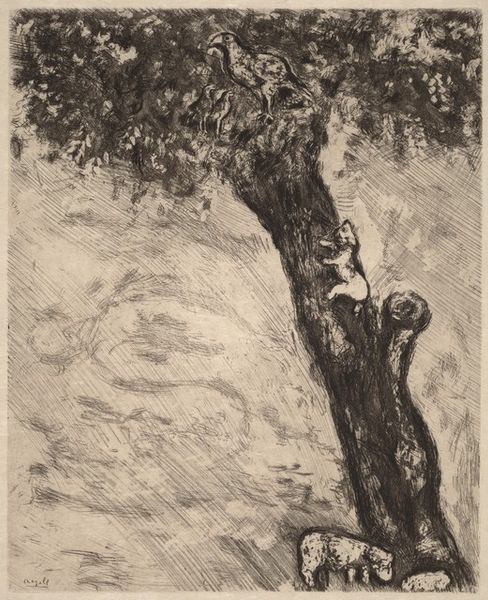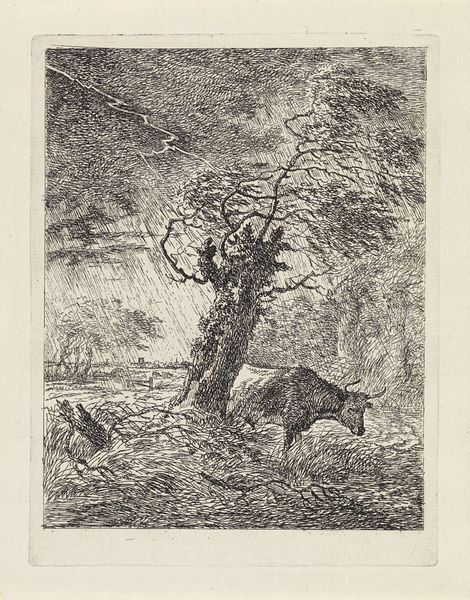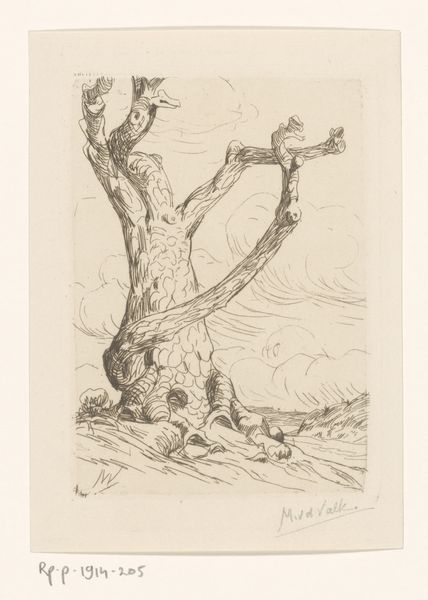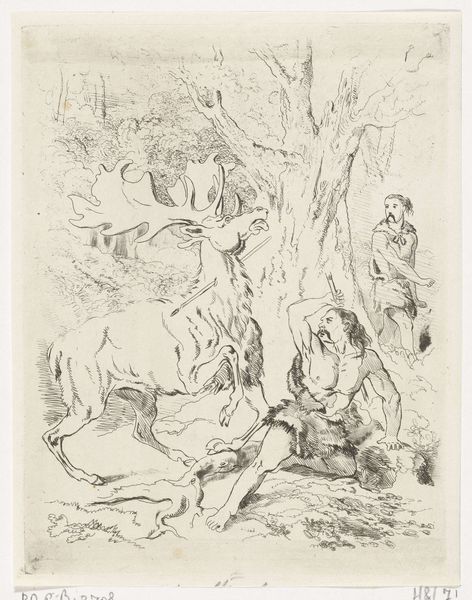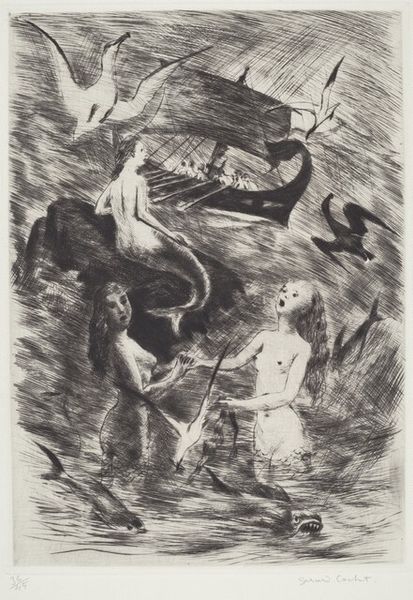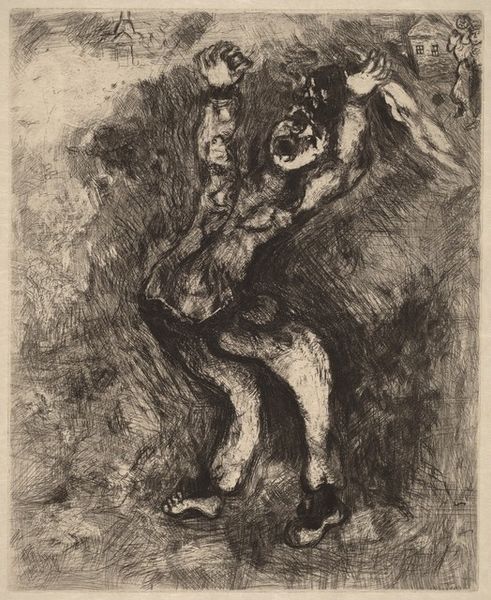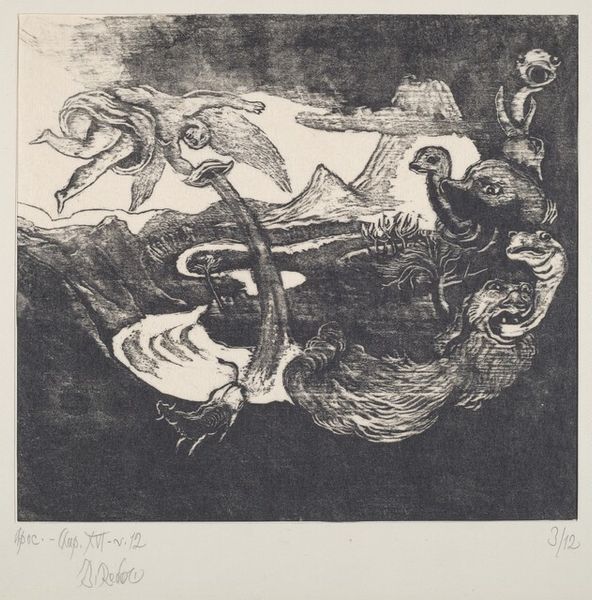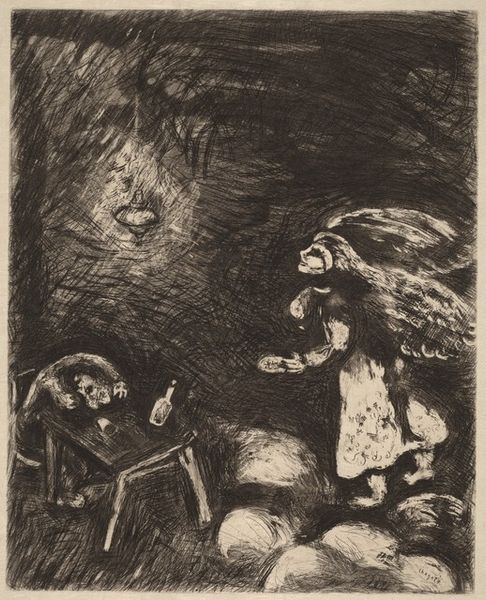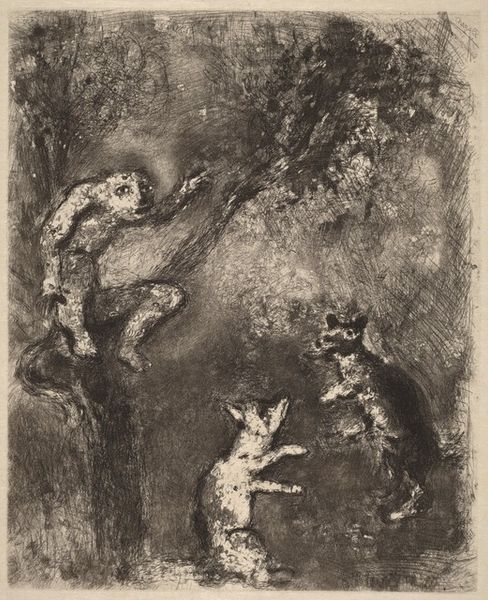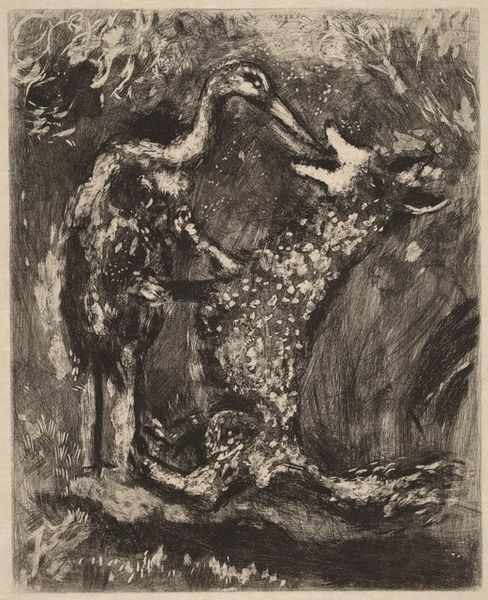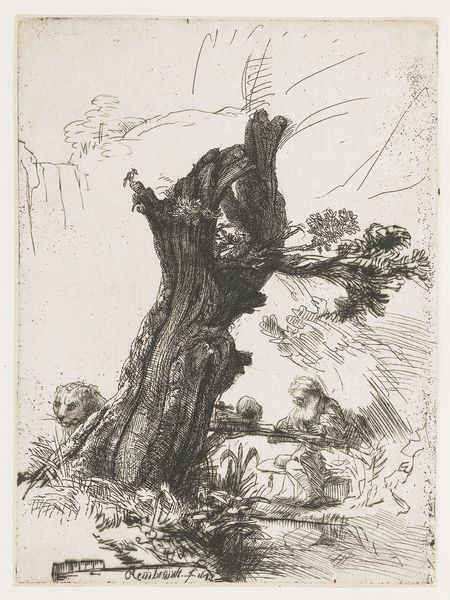
print, etching
#
ink drawing
#
medieval
#
narrative-art
# print
#
etching
#
landscape
#
figuration
Copyright: National Gallery of Art: CC0 1.0
Editor: Here we have "The Cock and the Fox" by Marc Chagall, an etching made between 1927 and 1930. It’s a fable brought to life in stark monochrome. The mood is kind of tense, the fox looks so desperate, but also playful! How do you read this print? Curator: Fables are such a fertile ground for the human psyche! Consider the cultural memory embedded in animal archetypes. The fox, forever the trickster, reaching, almost pleading toward the perched rooster. It reminds me of how we often project desires onto unobtainable objects or people. Have you considered how the visual hierarchy reinforces this? Editor: I see what you mean. The rooster is physically above, in a position of power, but… is that a second fox flying through the sky? Curator: An excellent observation! Note the floating figure, a kind of echo or a ghostly premonition. This doubling suggests that the fox's desires are leading him somewhere beyond reality, potentially into the realm of fantasy or delusion. Are you reminded of anything? Perhaps Icarus or other figures from mythology or folklore who overestimate their own reach? Editor: That makes the whole scene so much more tragic! This seemingly simple fable becomes a potent image about the dangers of longing and misplaced trust in outward appearances and clever words. I wouldn't have gotten that without your interpretation. Curator: Exactly. Through the repeated symbols we recognise a continued theme – this reminds me of continuity throughout cultures over time and the cultural need to repeat moralising narratives. Editor: This has given me so much food for thought, now I’ll always question my interpretation of what might seem a self explanatory piece.
Comments
No comments
Be the first to comment and join the conversation on the ultimate creative platform.
